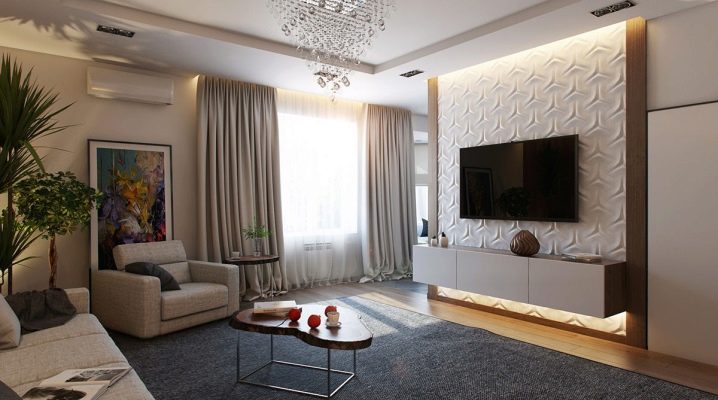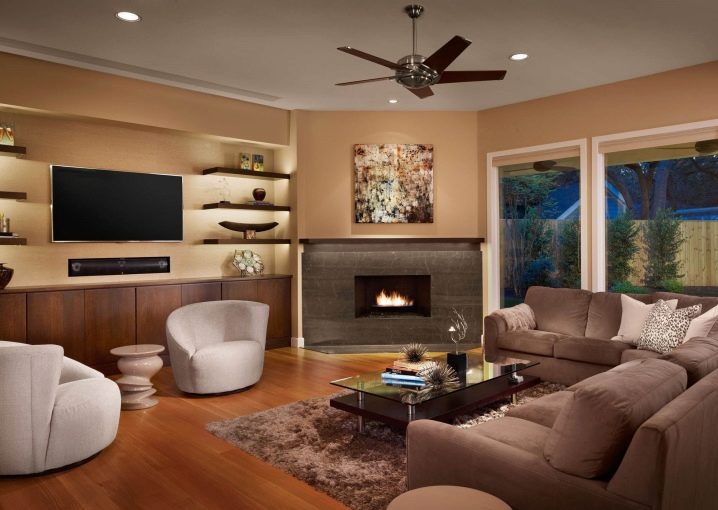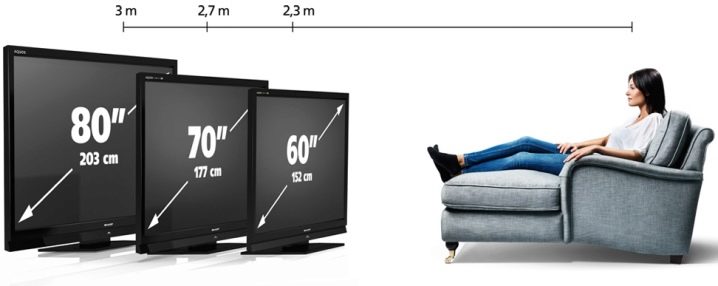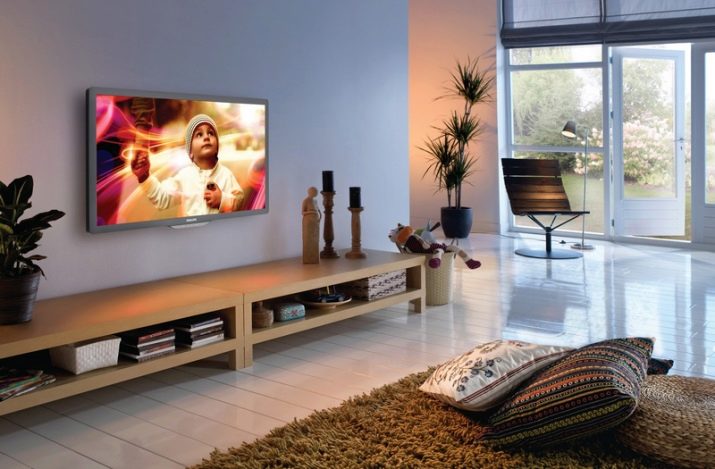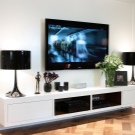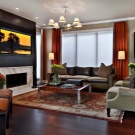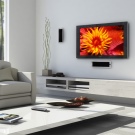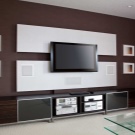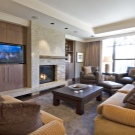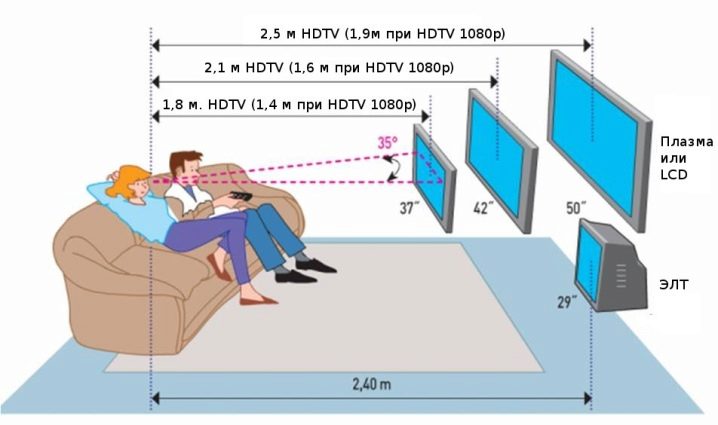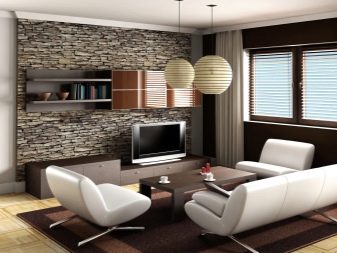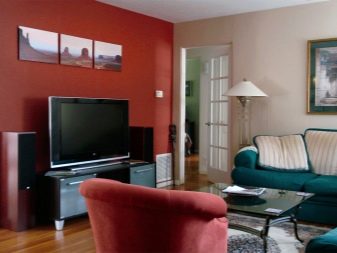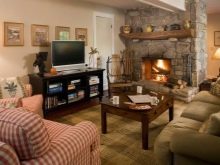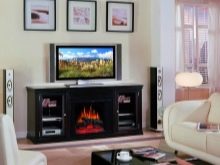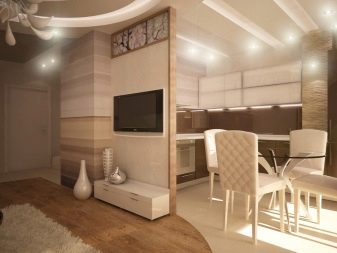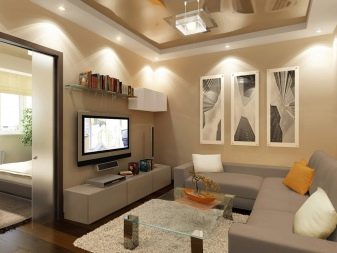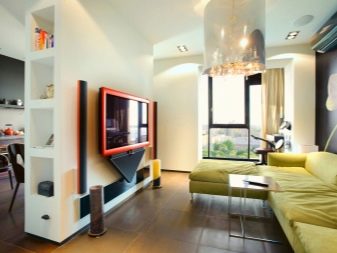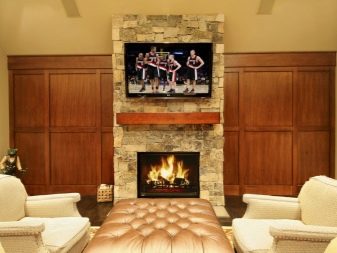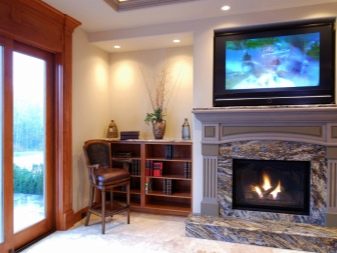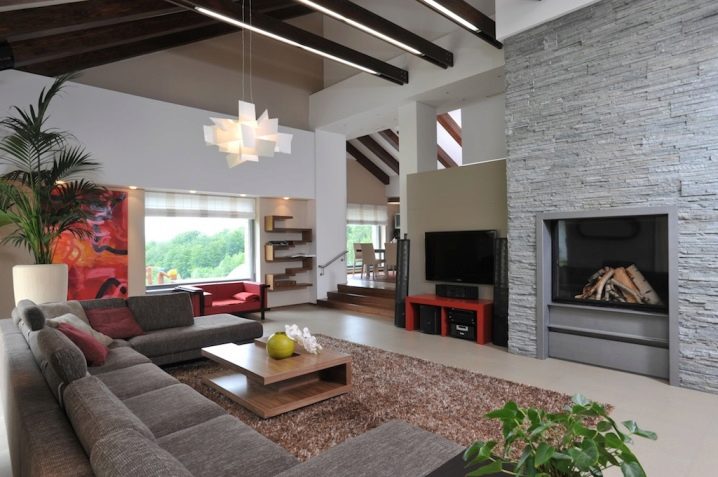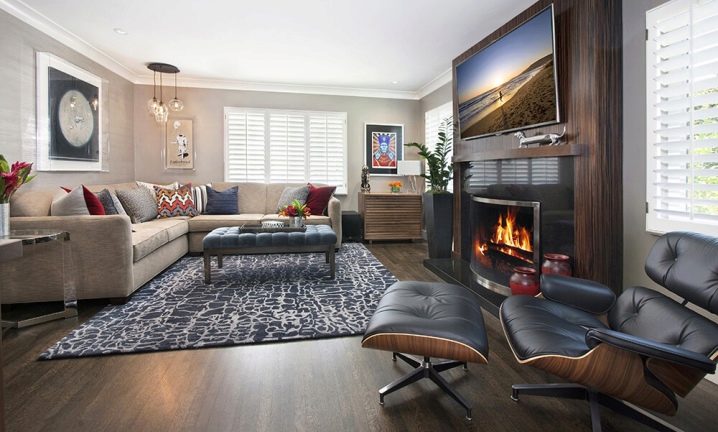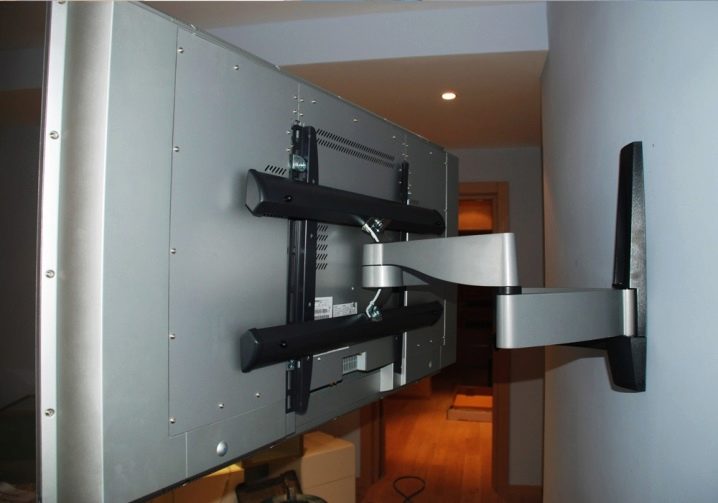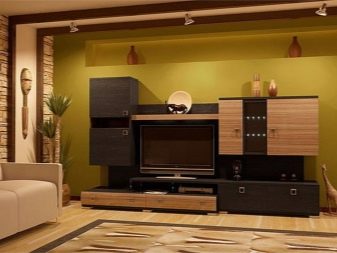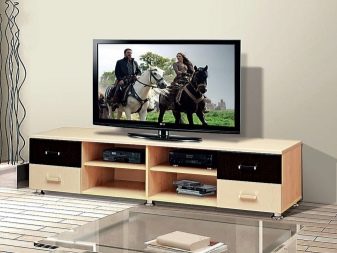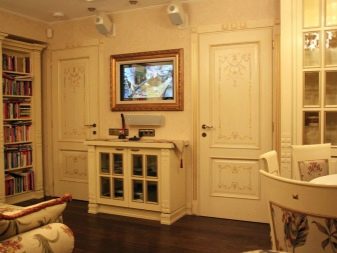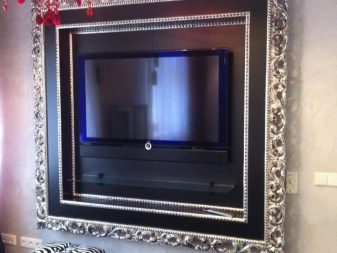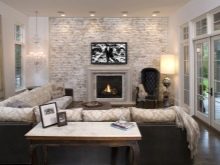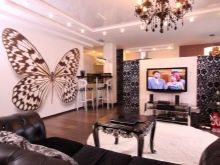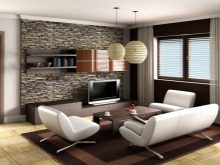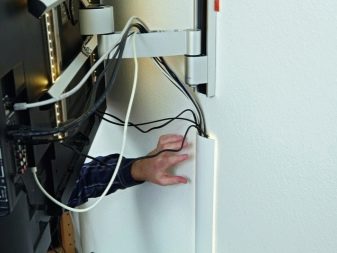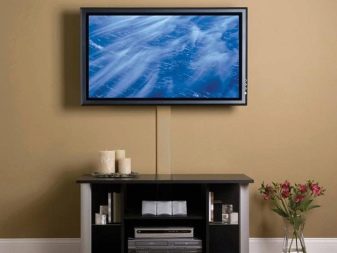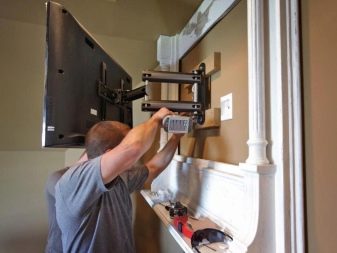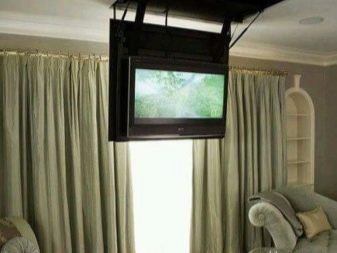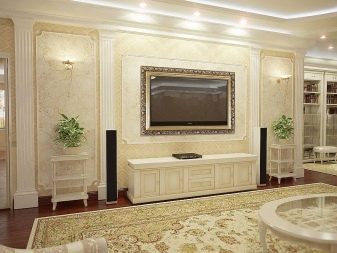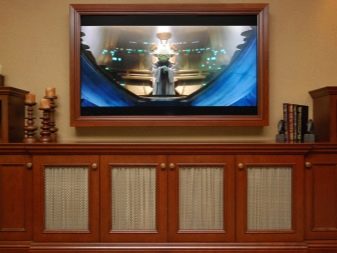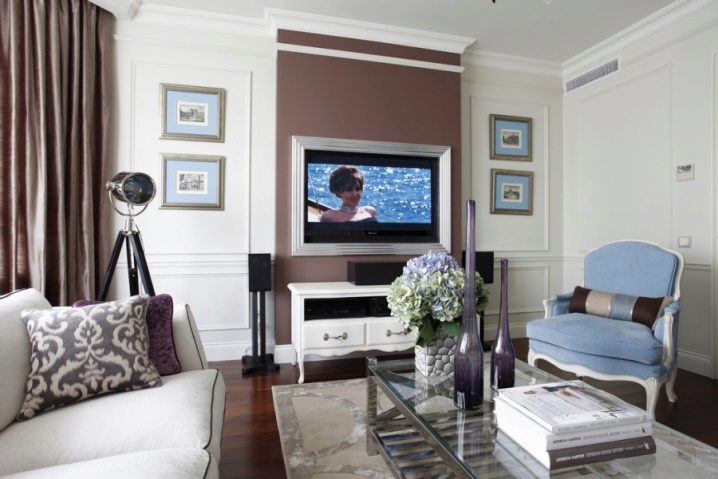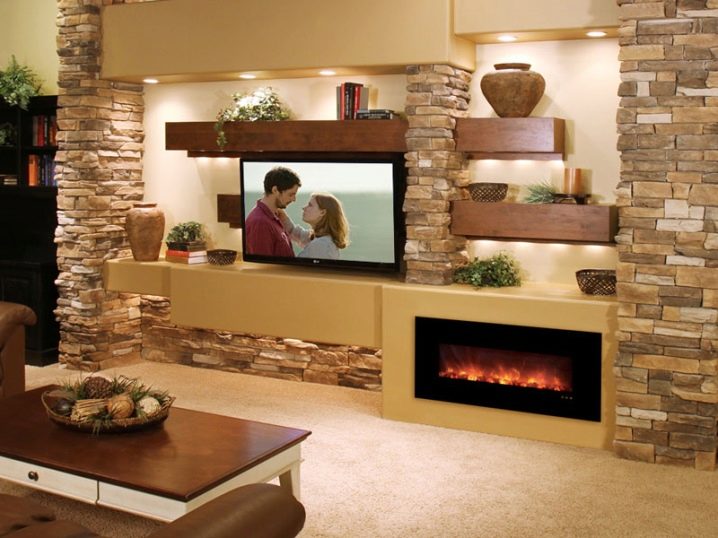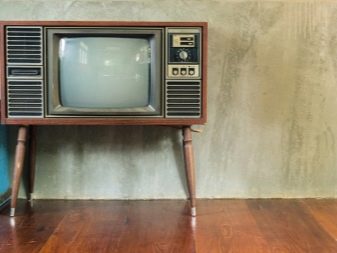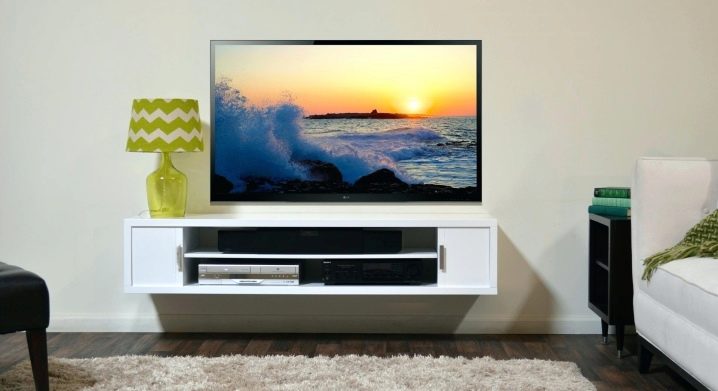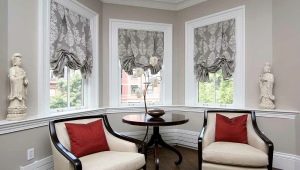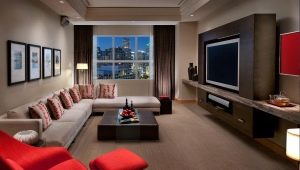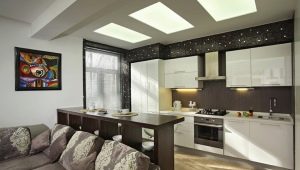How to arrange the TV in the interior of the living room?
TV in the modern living room performs informational, communicative and decorative functions, so its proper placement should be given special attention. From the thoughtful and rational location of the TV depends on the ease of viewing and the overall harmony of the interior. How to put the TV in the interior of the living room: understand together.
Special features
There are several factors that influence the choice of location for a TV.
Living room area and layout
It is not recommended to install models with a large diagonal in small rooms. The distance from the screen to the eyes should be from three to five diagonals. If the living room has a non-standard layout, you need to place so that the screen was visible from the place of the intended viewing (for example, from a sofa, armchair or from the table).
When you make large rooms should be zoning. This will avoid the discomfort of large space, make the living room ergonomic and comfortable.
Window location
Installing the TV in front of the window is not recommended.In the daytime, the screen will reject the sun glare. If the living room is too narrow and does not involve placing the monitor on the side walls, use the “blackout” system, or hang thick curtains.
Sanitary and hygienic standards
When placing the monitor, you need to remember that the center of the screen should be at the level of the viewer's eyes. The exception is made by receivers with a large diagonal, which are installed in spacious living rooms. In such cases, a slight excess of the height indicator is allowed (subject to strict observance of the distance from the eyes to the screen).
It is not recommended to install a TV in close proximity to a workplace or a children's play area. Do not install the monitor near a heater and radiators. This contributes to the overheating of technology and rapid failure of the system.
How to place?
Placing the TV in the living room depends on the design and size of the receiver. Cube-shaped semiconductor and lamp models are installed on special stands, cabinets and tables. Placement takes place at the wall or in the corner, which is dictated by the lack of aesthetics of the rear panel of the TV.For installation in the middle of the room in cases where zoning techniques are used, such models are not suitable.
Flat models are placed on the wall, cabinet, or in niches specially designed for this. This method of placement allows ergonomic use of space, transforms the interior and eliminates the likelihood of accidental damage to the TV. To install the free wall is chosen, not too cluttered with decorative elements or furniture. Sofa and chairs can be located opposite the screen, can be installed opposite each other near opposite walls. TV in this case is placed on the third wall: it is clearly visible on both sides.
In narrow living rooms one can often see a sofa near one wall, and a TV set on the other. With this arrangement, you need to carefully consider the choice of the size of the diagonal. When viewing a large monitor, dizziness and headaches may begin at close range. In this case, it is better to place the receiver on the wall opposite to the window and purchase thick blinds or curtains.
In spacious rooms the flat panel monitor can be wall mounted., or be placed on the floor, stand in the middle of the room, zoning the room, clearly distinguishing the TV zone from the rest of the space. You can set a coffee glass table between the sofa, armchairs and a TV: this will allow you to form a resting corner and a place to eat in front of the TV. In large living rooms you need to choose widescreen models. A small monitor will get lost in the interior and make you look at the screen, over-exaggerating your eyes. This will not contribute to proper rest and comfortable viewing.
At the TV and fireplace, which are in the same living room, develop their own relationship. Both objects are bright and often central design elements. The attention of the incoming is paid to them, therefore, special requirements are placed on the placement of the TV in a room equipped with a fireplace.
A common mistake is to place the monitor above the mantelpiece. In this case, objects begin to compete with each other, diverting everyone’s attention to themselves.
As a result, the harmony and integrity of the design is lost, a feeling of oversaturation of the fireplace area with decorative elements appears.Placing the receiver near a wood-burning fireplace is also not worth it. These are representatives of different eras. It will not be easy to link the contrasting elements of a single style guide.
The best option is the location of the TV on the opposite or side wall. With this layout, the flame of the fireplace will not distract the viewer from viewing, will save the monitor from overheating. If space permits, you can dilute both objects in different zones, creating an aristocratic spirit with a hint of luxury and pomposity in one of them, and bring the other closer to modern technological minimalism or hi-tech.
Constructions
To install a television receiver, you can use the following devices.
Support
This mechanism is a metal strip for technology, which is firmly fixed on the wall. The advantage is the simplicity of the design and the possibility of self-manufacturing and installation. The disadvantages include the need to drill the wall and the inability to change the angle of the screen.
Bracket
The most common and versatile way of mounting TVs. The brackets are of three types.The first is a rigid mount and is characterized by a clear fixation of the monitor in one position. The second type assumes a slight deviation of the receiver from the support by 20 degrees and allows you to independently adjust the slope. The third type is the most technologically advanced pan-tilt mechanism and allows you to rotate and tilt the screen in all directions.
The limitation for wall-mounted TVs is the wall material. For drywall monitor mount is prohibited. This basis is able to withstand a weight of not more than 30 kg. Fix the structure on a concrete or brick base with dowels. This will ensure safe operation of the device and will facilitate natural cooling due to the cold nature of the material.
A good option for placing the monitor is a stand or table under the TV.which besides the direct functions possess powerful decorative effect. The modern manufacturer presents a huge number of models made of glass, wood, MDF plates and plastic. The combination of glass and metal, carved wood and openwork forging looks harmonious.
Due to the large assortment and wide color range, there is a possibility to choose a TV stand for any interior.
Wall and Background Finishing
TV is often one of the main elements of the interior, so the background and decorative walls should be in harmony with the monitor. A popular trend is the installation of niches made of plasterboard. With it, you can realize the most daring design ideas, make the living room stylish and original. You can arrange a niche of natural wood. An important role is played by the material and color of the wall finish. Mirror tiles, photo wallpapers with collages, artificial panels, decorative stone and bricks are used for decorating.
When choosing colors and style of finish, you must consider the color of the TV panel. For example, the model of a milky color will look good against the background of brickwork, but it is absolutely not suitable for a snow-white wall in the high-tech style. An interesting solution is to place the TV in the picture frame, which acts as a link between the monitor and the retro-interior room. As a background for classic black models, all shades of cream and chocolate should be highlighted, as well as black, white and pastel colors.To make the living room room look harmonious, it is necessary that the color of the television panel be repeated in other details and elements of the interior.
Useful tips
Before installing the TV, you must ensure that the wires and sockets are hidden or decorated. When using a cabinet or table, a block of four sockets can be positioned at a level of 30 cm from the floor. In such furniture there are always technological holes for wires. When mounting plasma models with wall type mounting sockets set at a distance of 10 cm from the top or bottom edge of the monitor.
In case of placing the TV in front of the window and using the electrician, an additional outlet should be provided, which should be placed in the closed area of the curtain.
Beautiful example in the interior
A well-considered approach and a competent combination of a television panel with other furnishings will allow the LCD monitor to be incorporated into modern styles and retro trends:
- the picture frame harmoniously reconciles the modern plasma and vintage interior;
- an interesting combination of LCD monitor and gentle Provence style;
- good placement of the TV and fireplace emphasizes the geometry of the space and completes the image;
- the old model in the traditional interior is a real portal to the past;
- stylish TV stand - a contrast of shades and unity of forms.
About how best to arrange the TV in the interior of the living room - the next video.
